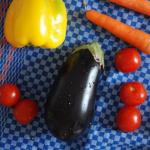The rice casserole recipe has a long history. In Rus', other grains were initially used - millet, oats, buckwheat, wheat and pearl barley. Rice came later in the recipe.
The ease of preparation and availability of ingredients ensured the dish's popularity. Rice casserole in the oven is prepared for breakfast, lunch, snack or dessert. The menu of most kindergartens includes rice casserole with raisins and apples.
There are many options for preparing the casserole - in a slow cooker or oven, with a sweet fruit filling. A popular savory casserole with minced meat, vegetables or cheese. The cooking process is simple and can be done by any housewife.
To make the sweet casserole airy and rise, you need to follow 3 simple rules:
- choose round rice;
- use powder instead of granulated sugar;
- beat the whites separately from the yolks.
By following these simple tips, the casserole will turn out as tender as in kindergarten.
Casserole with raisins in a slow cooker
Children's favorite dessert is made from rice or rice porridge. This tender baby casserole can be a complete carbohydrate breakfast, snack or dessert. This casserole is convenient to take to work or give to children at school for lunch.
The classic version of a children's casserole in a slow cooker is prepared with raisins, but you can experiment and add a pear or banana. You can serve the casserole with sweet sour cream sauce, jam, hot chocolate or cocoa.
Preparing the casserole will take 1 hour.
Ingredients:
- boiled rice – 250-300 g;
- raisins – 3 tbsp. l;
- sour cream – 200 gr;
- sugar – 3 tbsp. l;
- salt - a pinch;
- egg – 2 pcs;
- semolina – 2 tsp;
- butter.
Preparation:
- Separate the whites from the yolks.
- Cool the egg whites and beat with a pinch of salt until light foam forms.
- Combine rice, sugar, sour cream and yolks. Mix the ingredients thoroughly.
- Add whipped egg whites and raisins. Stir.
- Grease the multicooker bowl with butter and sprinkle with semolina.
- Place the casserole dough into the bowl. Place several thin slices of butter on top.
- Bake the dish for 50 minutes in baking mode.
- Before serving, you can decorate the casserole with powdered sugar.
Ingredients:
- rice – 450-500 g;
- egg – 3 pcs;
- raisins – 4 tbsp. l;
- apples – 3-4 pcs;
- milk – 500 ml;
- butter;
- sugar – 5 tbsp. l;
- vanilla sugar – 1.5-2 tbsp. l;
- brandy – 1 tsp;
- zest of 1 lemon;
- lemon juice;
- raspberry jam - to taste;
- salt – 1 pinch.
Preparation:
- Wash and boil the rice in milk for 15 minutes. Cook over low heat. Turn off the rice and wait for the porridge to cool completely.
- Wash, dry the raisins and pour in brandy.
- Separate the yolks and whites. Mix the yolks with lemon zest. Beat the whites with salt until foamy.
- Add sugar, vanilla and butter to the yolks. Using a fork, grind the mixture until smooth.
- Add rice porridge and raisins to the yolks. Stir until the raisins are evenly distributed in the dough.
- Add the whipped whites and mix.
- Grease a baking dish with butter. Pour in the rice dough and spread evenly in the pan.
- Cut the apples in half and remove the core.
- Place the apples, core side up, on the dough, press down lightly and sprinkle with lemon juice.
- Heat the oven to 200 degrees and bake the dish for 35 minutes.
- Remove the mold and spoon raspberry jam into the apple cores.
Rice casserole with chicken and vegetables
This savory chicken and rice casserole with vegetables provides variety for lunch, dinner or a snack. The low-calorie dish is prepared by supporters of proper nutrition and people at the stage of active weight loss. When cut, the casserole looks very appetizing and can even decorate a holiday table. Convenient to take to work for lunch.
Add eggs, sugar to the viscous porridge cooled to 60°C; you can add raisins, dried apricots, and vanillin. The mass is mixed and spread on a baking sheet greased and sprinkled with breadcrumbs in a layer of up to 4 cm. The leveled surface of the casserole is greased with raw eggs and sour cream and baked in an oven at 250°C until golden brown. The slightly cooled casserole is cut into portions and served one at a time with sour cream, butter or sweet sauce.
Ticket number 24
1.Frying meat in large pieces “Roast beef of three degrees of readiness”
Beef (tenderloin, thick and thin edges) is cleaned into a large piece weighing 1-2 kg, rubbed with salt and pepper, and placed on a baking sheet heated with fat. The meat is placed with an interval of at least 5 cm between pieces, fried over high heat until a crispy crust forms, then placed in the oven and continued to be fried at a temperature of 160-170°C.
During frying, the meat is periodically turned over and poured with the released juice and fat. Roast beef can be fried to three degrees of doneness: rare (the meat is fried until a crispy crust forms), medium-rare (the meat is pinkish in the center) and well done (the meat is gray inside). The degree of doneness is judged by the elasticity of the meat: a half-done roast has little springiness, a fully roasted roast has almost no elasticity. The finished roast is cut into portions of 2-3 pieces.
The juice remaining after frying on a baking sheet is evaporated, the fat is drained, a small amount of broth is poured, boiled and filtered. The resulting meat juice is used when releasing meat.
When leaving, a complex side dish consisting of 3-4 types of vegetables, sliced horseradish is placed in bouquets on a portioned dish or plate, sliced meat is placed next to it, and meat juice is poured over it. French fries or fried potatoes can be used as a side dish.
2.Preparing omelettes.
Omelettes differ from scrambled eggs in that they are prepared with the addition of liquid - milk, water or cream. According to the cooking technology, omelettes are divided into natural, mixed with garnish, and stuffed with garnish.
To prepare omelettes, eggs, melange or egg powder are used. Combine the prepared egg products with milk and salt, mix well, beating lightly until foam appears on the surface. You can add a small amount of melted butter to the resulting omelette mass. For one egg take 15 g of milk.
Natural omelette. Prepare in a frying pan with a thick bottom, which is heated well, then melt the butter on it and quickly pour in the prepared omelette mixture. Fry the omelette, shaking the pan or stirring lightly with a knife until the mixture thickens. The edges of the finished omelette are folded over, giving it the shape of a pie, and transferred to a heated plate, seam side down. When leaving the omelette, you can pour butter or sprinkle with finely chopped herbs.
Mixed omelette fried like a natural one, after adding finely chopped vegetables, mushrooms, meat products, and grated cheese to the raw omelette mixture.
Omelet with cheese. Add grated cheese to the prepared omelette mixture, mix, fry and dispense like a natural omelette.
Stuffed omelettes. Prepared with meat or vegetable side dishes or sweet ones. The omelette mixture is poured into a prepared heated frying pan with oil and fried until the mixture thickens. Place the prepared minced meat in the middle, wrap the edges of the omelette on both sides, covering the minced meat with them and giving it the shape of a pie. When leaving, place on a heated plate, seam side down, pour over melted butter.
To prepare side dishes, meat products (ham, boiled sausage or frankfurters), boiled kidneys, as well as liver or meat are cut into small cubes or strips, fried, combined with red, tomato or sour cream sauce with onions and brought to a boil. Vegetables are cut into small cubes. Beans and cauliflower are boiled, green peas are heated, carrots and spinach are simmered, zucchini and mushrooms are fried, and seasoned with milk, sour cream or sour cream sauce. Side dishes for stuffing can consist of one type of product or a combination of several types.
When preparing a sweet omelette, add grated lemon zest or cardamom, ground with sugar, to the omelette mass. Fried omelette is stuffed with seedless berries, jam or marmalade. When serving, sprinkle with refined powder.
Natural and mixed omelettes, scrambled eggs, eggs in milk sauce and other dishes are prepared baked. Egg dishes are baked at a temperature of 160-180°C.
Natural baked omelette. Lightly beat the omelette mixture and pour it onto a greased baking sheet, place it in the oven and bake until the mixture thickens completely and a slightly browned crust appears on the surface. This method is usually used for mass production, although a baked omelette can also be prepared in a portioned frying pan.
The finished omelette is cut into square and triangular portions, one per serving, and released, placed on a plate and sprinkled with oil. This omelet can be used for broth, for closed sandwiches.
Mixed baked omelettes are prepared with various side dishes - fried potatoes, poached carrots or cabbage, crumbly porridges, and meat products.
Omelet with fried potatoes (baked). The processed potatoes are cut into cubes or slices and fried on a baking sheet in the main way, then poured with an omelette mixture and baked in the oven until cooked. Cut into square portions and release one per serving, pouring melted butter over them.
Drachena. It differs from an omelet in that it is prepared with the addition of flour and sour cream. The prepared eggs are broken into a bowl, milk and salt are added, then sifted flour is added (can be sautéed) and everything is mixed well with a whisk and filtered. You can add sour cream or melted butter to the mixture. Grease a baking sheet or frying pan with oil and pour out the mass in a layer of no more than 1 cm. Drachena is baked in the oven until a slightly browned crust appears on the surface and immediately used for holiday. Cut into portions and leave with butter. Drachena cannot be stored, as it loses its appearance and taste.
Eggs baked with milk sauce. Croutons (croutons) are made from white bread. The bread is peeled from crusts and cut into pieces, a depression is made in the middle and the bread is fried in butter. Eggs are boiled “in a bag” and peeled. Place croutons in a greased frying pan, add one egg to each of them, pour over medium-thick milk sauce, sprinkle with grated cheese, pour over butter and bake in the oven until lightly browned. Dispense in portions, pouring melted butter over it.
If you are a rice lover, then you probably know that it is a versatile and healthy product. It allows you to diversify the menu not only with side dishes, pilaf and sushi, but also with various desserts. An example of this is rice casserole. The recipe may include various fruits and berries, both fresh, canned or dried. However, the option with meat, fish or vegetables also has every chance of becoming one of your favorites, so without delaying it, let’s try to prepare this unusual, satisfying and tasty dish.
Sweet rice casserole recipe
This version of rice casserole is made with raisins, but you can replace them with any berries or fruits, such as banana, currants or dried apricots. By the way, dried apricots go great with rice! You just need to pre-soak it and cut it into pieces. So, let's begin! We will need:
Half a kilo of cottage cheese;
- 180 grams of short grain rice;
- two eggs;
- five tablespoons of sour cream and sugar;
- 60 grams of light, seedless raisins.
Cooking technology
Pour water over raisins and set aside to soak. Boil the rice in lightly salted water until almost done and rinse it with warm boiled water. Beat cottage cheese and sour cream in a blender until creamy. We separate the egg into white and yolk. We set the white aside for now, it will be useful to us, and beat the yolk and another egg with sugar until smooth and combine with the curd mass. Add raisins, add rice and transfer everything into a baking dish. Bake in a preheated oven at 180 0 C for about an hour. Place on a nice platter, let cool and enjoy! If you are not a sweet tooth, you can experiment. Replace raisins in the recipe with minced meat, vegetables and herbs, because rice casserole with cottage cheese does not have to be sweet!

French casserole with cherries
Even if you have never been to France, after trying this dish, you can safely consider yourself a little French. After all, from now on, a sweet, cherry-smelling piece of Paris will always be on your table - a wonderful rice casserole, the recipe for which was invented by real Frenchmen! Let's get started. We will need:

Half a cup of short grain rice;
- half a liter of milk;
- four eggs;
- 75 grams of brown sugar (regular sugar will do too);
- about twenty cherries;
- ½ teaspoon salt;
- vanilla;
- butter for greasing the mold.
Cooking technology
Boil the rice in water for five minutes and drain it in a colander. Meanwhile, bring a mixture of a glass of water and one and a half glasses of milk to a boil. As soon as it boils, reduce the heat to medium and add rice. Cook it for about twenty minutes, stirring constantly, until the contents of the pan thicken and become viscous. Remove the porridge from the heat and let it cool slightly. For now, you can remove the pits from the cherries. When the mixture has cooled, add eggs one at a time, stirring thoroughly. Grease a baking dish, pour the rice mixture into it and place the cherries on top. Sprinkle it evenly with powdered sugar and set it to bake for about 45 minutes at a temperature of 180 0 C. All that remains is to cool our masterpiece. If you like this rice casserole, you can change the recipe for variety by including different fruits and berries, such as figs. It will turn out unusual and very tasty!
TECHNICAL AND TECHNOLOGICAL CARD No. Rice casserole with cottage cheese
- APPLICATION AREA
This technical and technological map was developed in accordance with GOST 31987-2012 and applies to the dish Rice casserole with cottage cheese produced by a public catering facility.
- REQUIREMENTS FOR RAW MATERIALS
Food raw materials, food products and semi-finished products used for preparing dishes must comply with the requirements of current regulatory documents, have accompanying documents confirming their safety and quality (certificate of conformity, sanitary-epidemiological report, safety and quality certificate, etc.)
3. RECIPE
Name of raw materials and semi-finished products \Gross\Net
| Rice groats | - | - | 48 | 48 | 75 | 75 | |||||||
| Water | - | - | 100 | 100 | 155 | 155 | |||||||
| Raisin | - | - | 20,5 | 20 | - | - | |||||||
| Cottage cheese | - | - | 40,5 | 40 | 40,5 | 40 | |||||||
| Eggs | - | - | 1/4 | 10 | 1/4 | 10 | |||||||
| PC. | PC. | ||||||||||||
| Sugar | - | - | 15 | 15 | 15 | 15 | |||||||
| Vanillin | - | - | 0,01 | 0,01 | 0,01 | 0,01 | |||||||
| - | - | 5 | 5 | 5 | 5 | ||||||||
| Table margarine | |||||||||||||
| Wheat crackers | - | - | 5 | 5 | 5 | 5 | |||||||
| Sour cream | - | - | 5 | 5 | 5 | 5 | |||||||
| Weight of semi-finished product | - | - | - | 225 | - | 280 | |||||||
| Finished weight | - | - | - | 200 | - | 250 | |||||||
| casseroles | |||||||||||||
| butter | - | - | 10 | 10 | 10 | 10 | |
| or sour cream | - | - | 30 | 30 | 30 | 30 | |
| Yield: with fat | - | - | - | 210 | - | 260 | |
| with sour cream | - | - | - | 230 | - | 280 |
4. TECHNOLOGICAL PROCESS
To the finished crumbly porridge, prepared with or without raisins and cooled to 60-70 °C, add pureed cottage cheese, eggs beaten with sugar, vanillin dissolved in a small amount of water, fat and mix.
The prepared mass is laid out on a baking sheet greased with melted fat and sprinkled with breadcrumbs, the surface is greased with a mixture of eggs and sour cream and baked for 10 minutes. Serve the casserole with fat or sour cream.
- REQUIREMENTS FOR DESIGN, SALE AND STORAGE
Serving: The dish is prepared according to the consumer’s order and used according to the recipe for the main dish. Shelf life and sales according to SanPin 2.3.2.1324-03, SanPin 2.3.6.1079-01 Note: the technological map was compiled on the basis of a development report.
- QUALITY AND SAFETY INDICATORS
6.1 Organoleptic quality indicators:
Appearance – Characteristic of this dish.
Color – Characteristic of the products included in the product.
Taste and smell – characteristic of the products included in the product, without any foreign tastes or odors.
6.2 Microbiological and physico-chemical indicators:
In terms of microbiological and physicochemical indicators, this dish meets the requirements of the technical regulations of the Customs Union “On the safety of food products” (TR CU 021/2011)
- FOOD AND ENERGY VALUE
Proteins, g Fats, g Carbohydrates, g Calories, kcal (kJ)




